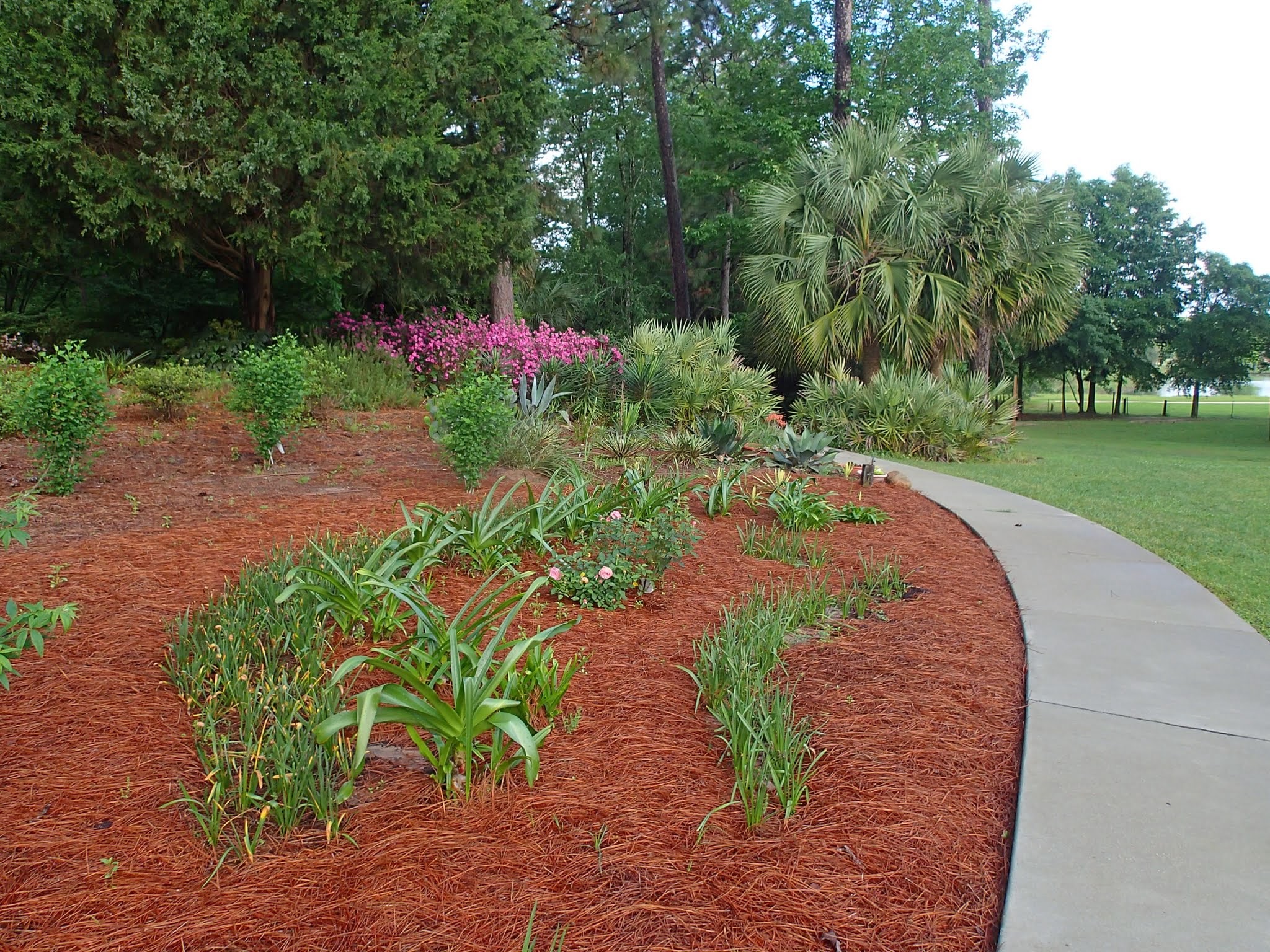Pine Needle Mulch- the Myths and Legends
go.ncsu.edu/readext?939999
en Español / em Português
El inglés es el idioma de control de esta página. En la medida en que haya algún conflicto entre la traducción al inglés y la traducción, el inglés prevalece.
Al hacer clic en el enlace de traducción se activa un servicio de traducción gratuito para convertir la página al español. Al igual que con cualquier traducción por Internet, la conversión no es sensible al contexto y puede que no traduzca el texto en su significado original. NC State Extension no garantiza la exactitud del texto traducido. Por favor, tenga en cuenta que algunas aplicaciones y/o servicios pueden no funcionar como se espera cuando se traducen.
Português
Inglês é o idioma de controle desta página. Na medida que haja algum conflito entre o texto original em Inglês e a tradução, o Inglês prevalece.
Ao clicar no link de tradução, um serviço gratuito de tradução será ativado para converter a página para o Português. Como em qualquer tradução pela internet, a conversão não é sensivel ao contexto e pode não ocorrer a tradução para o significado orginal. O serviço de Extensão da Carolina do Norte (NC State Extension) não garante a exatidão do texto traduzido. Por favor, observe que algumas funções ou serviços podem não funcionar como esperado após a tradução.
English
English is the controlling language of this page. To the extent there is any conflict between the English text and the translation, English controls.
Clicking on the translation link activates a free translation service to convert the page to Spanish. As with any Internet translation, the conversion is not context-sensitive and may not translate the text to its original meaning. NC State Extension does not guarantee the accuracy of the translated text. Please note that some applications and/or services may not function as expected when translated.
Collapse ▲North Carolina is the land of the pines, no doubt about that. There are about ten species of pine tree (the genus Pinus) native to North Carolina and it is the official state tree (no species specified though!). Many folks have them in their yards and on their property. Folks who are new to NC are quickly familiarized with pine trees as they drop cones and needles every year. With how common it is, it is not hard to understand there are a lot of rumors and misconceptions about our not-so-humble pines. We’re here to “needle” out the truth of the matter.
Using Pine Straw for Mulch Does NOT Acidify Your Soil
There. We said it. If we had a dime, even in this day and age, for every time we were asked about it, we could retire!
Besides experts at universities across the country (Oregon to New Hampshire!), I reached out to soil scientists at NC State University to clarify where this was

Rhododendron ‘Amelia Rose’ welcoming you through the palms to the Rhododendron Garden
coming from, and was told: in the grand scheme of how mulches break down, the “acidifying” effect of pine needles was no more than any other mulch, and generally soils have a higher buffering capacity (ability to withstand chemical changes) than the mulch’s effect on the soil. Soil microbes, climate, and the other organic matter on the ground also work to neutralize the acidic chemistry of the needles as they break down and become incorporated into the organic material in the soil.
So, now you can rest easy knowing your mulch isn’t “burning” your plants.
Where is this myth coming from?
The challenges with pine needles as acidifying may come from the fact that many of our pines in North Carolina thrive in acidic soils, like our longleaf pine, and so maybe the acidic nature of the soils has been attributed to the needle’s effects and not the nature of the underlying soil. An Oregon State University specialist said it best, “It is true that pine needles have a pH of 3.2 to 3.8 (neutral is 7.0) when they drop from a tree. If you were to take the freshly fallen needles (before the needles decompose) and turn them into the soil right away, you may see a slight drop in the soil pH, but the change would not be damaging to the plants.”
Proper, Annual Mulching is critical to Soil and Plant Health
Mulches serve a number of purposes that make a gardener’s and land manager’s job easier! The North Carolina Extension Gardener Handbook (2022) defines mulch succinctly as “any material placed on the soil surface to conserve soil moisture, moderate soil temperature, and/or control weeds.” All of these benefits outlined are for your plants AND your soil.
It is best to use mulch derived from organic matter sources, like needles, compost, leaves and hardwood bark chips, as these break down into finer organic matter and create a healthy soil biome for beneficial microorganisms to thrive. These microorganisms, in turn, help your plants by extending their root networks to make it easier for them to get water and nutrients from the soil.
Mulch reduces soil moisture loss and ensures a more even supply of soil moisture. It suppresses weed seed germination, especially with annual reapplication and additional mechanical weed control. A layer of mulch can help insulate soil from extreme temperature changes, which in turn, reduces plant stress during these times. In the case of a garden, mulches prevent mud from splashing on crop surfaces, keeping veggies cleaner. This also helps reduce fruit rotting in the field (in melons, strawberries, and tomatoes). Most perennials, trees and shrubs’ roots can be sufficiently insulated from winter cold under a 2-4-inch layer of mulch in NC. From a soil conservation perspective, mulches reduce soil crusting, soil erosion and soil compaction.
The last benefit is purely for the eye. There is something calming about the neat appearance of a landscape covered in a fresh layer of uniform mulch. You can use the needles that your own pine trees drop or purchase more. The longleaf’s needles are most prized for pine needle mulch and there is a large industry in North Carolina to produce this product. A 40-pound bale will typically cover about 100 square feet (a 10- by 10-foot bed) to a 2-inch depth (Texas AgriLife Extension Service).
Consider adding mulching to your annual maintenance plan for your garden or property, and don’t shy away from using pine needles!
Amanda Wilkins is the Horticulture Agent for North Carolina Cooperative Extension in Lee County.
References
EXCELLENT Guide to Mulches for Homeowners
General Mulching Pamphlet (still promoting pine needles as “acidifying”)
Great Extension Master Gardener article summarizing the virtues of pine needles
University of New Hampshire expelling the myth
University of Texas Article about Pine Straw with calculations
Managing Longleaf Straw for Landowners




